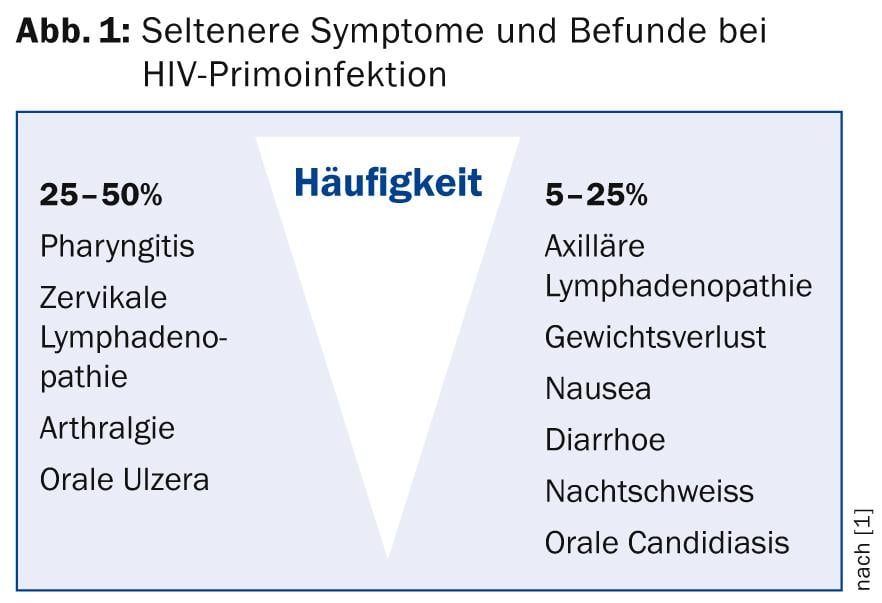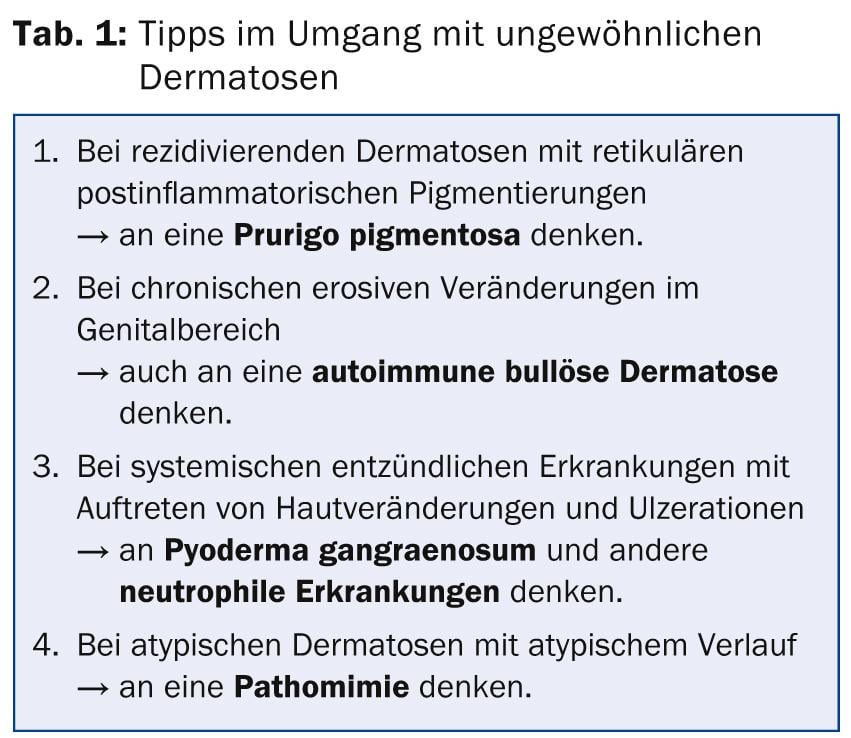As part of the centenary of the Dermatological Outpatient Clinic, an STI Continuing Education Day of the Swiss Society of Dermatology and Venereology was held at the Triemli in November 2013. A distinguished team of speakers provided insights into the development of acute HIV infection, presented updates on the diagnosis and treatment of gonorrhea, particularly the management of resistance, and discussed rare dermatoses and the relationship between systemic and genital manifestations.
Prof. Dr. med. Stephan Lautenschlager, Chief Physician at the Dermatological Outpatient Clinic of the Triemli City Hospital Zurich, looked back on the last hundred years of the “Dermi”. Among other things, he emphasized the outstanding commitment of the first director and doctor of the polyclinic, Max Tièche. After the move from Hohlstrasse 82 to Herman-Greulich-Strasse 70 and the death of Tièche, Walter Burckhardt, Kaspar Schwarz, Alfred Eichmann and finally Stephan Lautenschlager followed in 2002. The latter successfully manages the clinic to this day: “What has proven itself over a hundred years, we want to continue to maintain, and yet there should be room for medical and economic progress.”
Acute HIV infection
Prof. Dr. med. Manuel Battegay, Head of Infectious Diseases and Hospital Hygiene at the University Hospital Basel, spoke about acute HIV infection and therapy: “The HIV virus originated in West Africa about a hundred years ago, and the first reports about AIDS date back to 1981. The topic received increasing media attention in the 1980s. Today, the number of people infected worldwide is estimated at 35.3 million, with over 20 million living in Western and Central Europe.”
The natural, untreated course is as follows: After a primary infection, the acute HIV syndrome appears around week 2-6, which is associated with further distribution of the virus in the organism and penetration into the lymphoid organs and is often not recognized as such because of its similarity to the flu effect. The load of HIV RNA copies per milliliter of plasma is briefly very high during these three to four weeks. This is followed by a period of clinical latency, which varies greatly in length, on average 5-7 years, during which the body once again manages to largely replace the number of destroyed cells with the production of new ones. Only after several years do clinical symptoms finally appear, leading to severe immunodeficiency, AIDS (e.g. opportunistic infections with bacteria, viruses, fungi, etc.) and always death if untreated.
“Symptoms in HIV primo infection include, in descending frequency, high fever, fatigue, exanthema, myalgia, and headache,” Prof. Battegay said. In addition, rarer findings exist, which are summarized in Figure 1. In the acute phase of infection, a large proportion of the memory CD4 cells that are specifically directed against HIV are already destroyed.

The breakthrough
“At the end of the 1990s, the new antiretroviral combination therapies drastically reduced mortality by almost 70%, which is why we can call it a medical revolution,” explained Prof. Battegay. The goals of therapy today are to maximize viral load suppression, improve immunologic function, reduce HIV morbidity, prolong life with good quality of life, and prevent HIV transmission. Either two nucleoside reverse transcriptase inhibitors (NRTIs) with a non-nucleoside reverse transcriptase inhibitor (NNRTI) or with a ritonavir-boosted protease inhibitor (PI/r) are recommended. Another option is the addition of an integrase inhibitor (INI). If the therapy is used correctly and well controlled, and there is no active drug use and no prior AIDS diagnosis, the therapy works so well that there is little mortality difference from the general population.
Clarification of gonorrhea
Prof. Dr. med. Lars E. French, Clinic Director of the Dermatological Clinic at the University Hospital Zurich, who spoke on inflammatory genital dermatoses, was followed by the lecture of Prof. Dr. med. Angelika Stary, Head of the Fungal Outpatient Clinic in Vienna. She first gave some epidemiological data: “The World Health Organization (WHO) estimates that the incidence of Neisseria gonorrhoeae increased by as much as 21% in the years between 2005 and 2008. However, statements on the actual value are difficult due to deficiencies in the reporting system and surveillance. In Austria, we noted a worrying increase of about 300% between 2009 and 2011, which decreased somewhat by 2012 at a high level. What we know for sure is that the resistance problem in this field remains particularly acute and diagnosis remains suboptimal.”
Gonococcal diagnosis can be performed by staining methods (Gram, methylene blue), culture (selective, non-selective), and the so-called “Nucleic Acid Amplification Tests” (NAATs). Microscopic detection is sufficiently sensitive only in symptomatic men with urethral fluoride and should therefore be used for rapid diagnosis only in this situation. Culture remains the gold standard with high sensitivity and specificity at low cost. Only with this are antibiotic resistance tests possible. Transport and special culture conditions may present problems. In addition, cultures are less sensitive to rectal and pharyngeal swabs compared to NAATs. NAATs are now commonly used for routine diagnostics; such detection is useful for extragenital specimens, specimen shipping, culture problems, and screening. “However, the positive results should be confirmed, and the detection method is a supplement rather than an alternative to culture. It is not an option in children,” said Prof. Stary.
What to do about resistance?
The resistance problem is a big issue with gonococci. The verified clinical failure of cefixime outside Japan in 2010 and the first ceftriaxone-resistant strain fully described in 2011 attracted media attention. In principle, therefore, microbiological examination is of central importance for the therapy of gonorrhea. The drug of choice is cephalosporins, although an increase in minimum inhibitory concentration (MIC) is observed nationally and internationally. The CDC ( Centers for Disease Control and Prevention) therefore felt compelled to increase the recommended dose of ceftriaxone to 250 mg in its guidelines and to suggest a combination with 1 g azithromycin. The IUSTI (“International Union against Sexually Transmitted Infections”) guidelines advise combination with 2 g azithromycin. According to British recommendations, ceftriaxone is even 500 mg, also combined with 1 g azithromycin. “In Austria, resistance to azithromycin actually remains rare, below 2%. Overall, continuous monitoring of Neisseria gonorrhoeae resistance patterns is necessary,” Prof. Stary summarized.
Systemic and genital manifestations
Two speakers spoke about the connection between systemic and genital manifestations: Prof. Dr. med. Peter Itin, Chief of Dermatology at the University Hospital Basel, presented the diverse appearance of syphilis, which is a chameleon not only on the skin but also systemically, on the basis of various case histories. Thus, it can sometimes manifest as partial or complete loss of visual acuity, hearing loss, hearing loss, or with lung involvement.
Carlo Mainetti, MD, from the Dermatology Department at the EOC in Bellinzona, drew conclusions about possible systemic diseases from genital lesions. For example, he showed that ulcers and erosions can be indications of Behçet’s disease or Crohn’s disease. Papules and pustules as well as nodules, bumps, or granulomas may indicate sarcoidosis. If there is pain and edema at the scrotum, purpura Schönlein-Henoch or periarteritis nodosa should also be considered.
Unusual dermatoses
Prof. Dr. med. Luca Borradori, Director of the University Clinic for Dermatology at the Inselspital Bern, took the audience on a short quiz on unusual dermatoses. Using a casuistry, for example, he tested their knowledge of prurigo pigmentosa, a condition that occurs primarily in Japan and was first described in 1971. Typical features are a relapsing course, a symmetrical distribution of papules, plaques, vesicles and pustules on the trunk, neck and chest, and post-inflammatory reticular pigmentary shifts. The etiology is as yet unclear. What is certain is that the disease can also occur in non-Asian populations. Women are affected more often than men. A test treatment can take place with cyclines.
Another rarity is pemphigus vulgaris (PV), a blistering autoimmune disease of the skin in which generalized genital and anal involvement is relatively common but rarely occurs as an initial manifestation. Initially, PV appears on the oral mucosa in 80-95% of cases. If there is genital involvement, the glans is usually involved, less commonly the shaft or corona. In any case, the physician must ask about the genital expression in the case of an oral finding. “So, we can summarize that autoimmune bullous diseases should always be excluded in the differential diagnosis of chronic anogenital erosions,” Prof. Borradori said.
Lastly, he presents the case history of a 60-year-old patient with recurrent, painless, anogenital ulcers, in whom clarifications were made unsuccessfully in various clinics for more than six years and finally it turned out to be a dermatitis artefacta (pathomimia), very probably due to a massive sexual overload by his much younger wife. “This shows that building a good doctor-patient relationship with honest conversations is meaningful and important,” Prof. Borradori concluded his presentation. Tips in dealing with unusual dermatoses are shown in Table 1.

Source: 100 years of dermatology for the population of the city of Zurich, STI Continuing Education Day of the Swiss Society of Dermatology and Venereology, November 14, 2013, Zurich.
Literature:
- Vanhems P, et al: Comprehensive classification of symptoms and signs reported among 218 patients with acute HIV-1 infection. J Acquir Immune Defic Syndr 1999 Jun 1; 21(2): 99-106.
Dermatology Practice 2014; 24(1): 32-34











